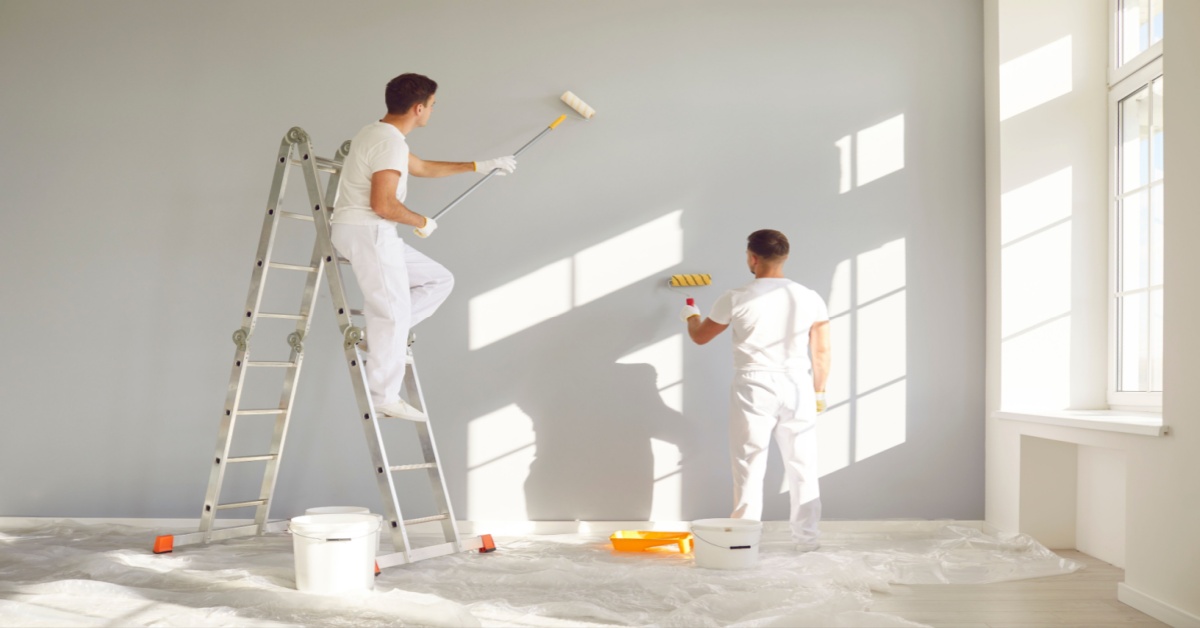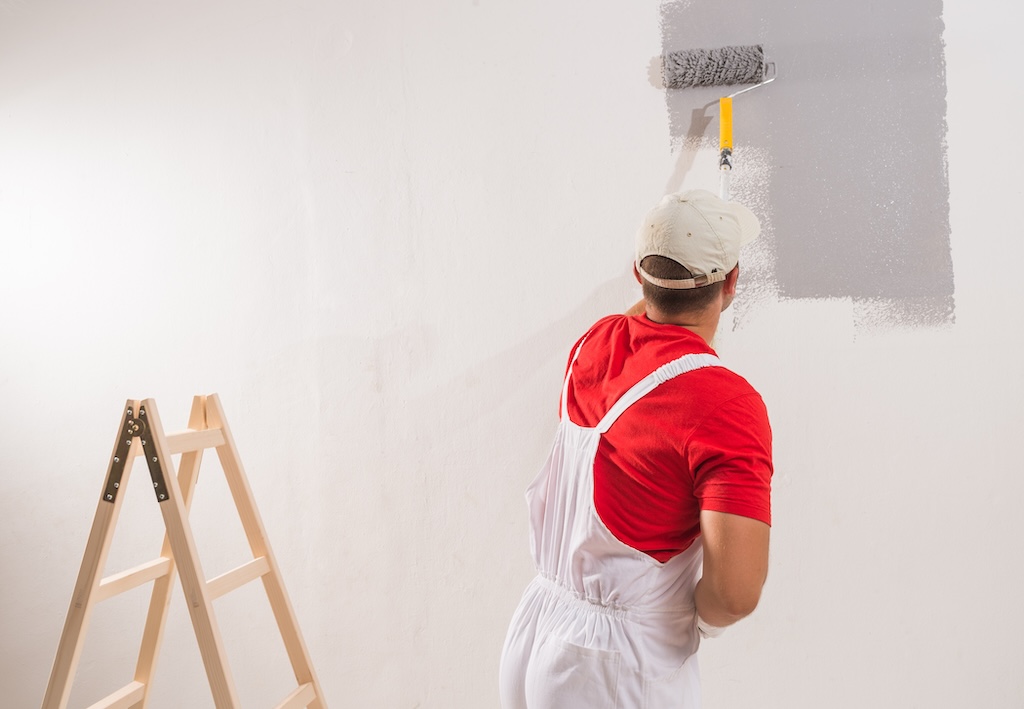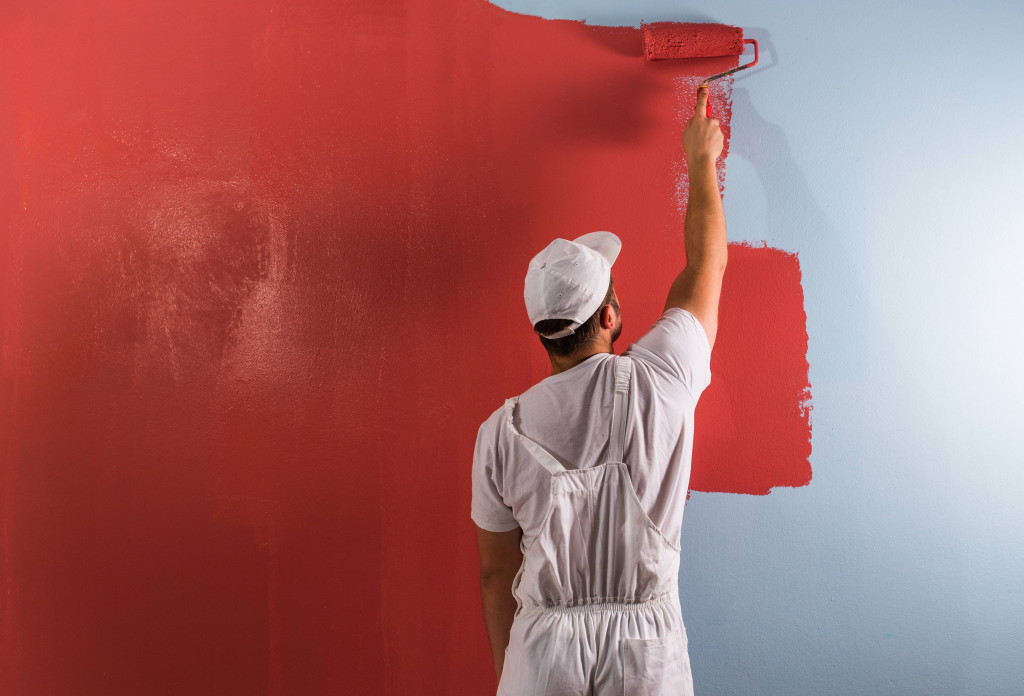Exploring the Various Kinds Of Paint: An Overview for each Project
Exploring the numerous kinds of paint is necessary for accomplishing the wanted end result in any type of project. From water-based options that supply ease to oil-based paints understood for their toughness, each option has its benefits. Specialty paints can include special structures or surfaces, while environment-friendly options satisfy those looking for sustainability. Comprehending these distinctions can significantly influence the success of a paint venture. What elements should one think about when making the right selection?
Comprehending Paint Kinds: Water-Based vs. Oil-Based
Paint types can markedly affect a project's end result, and comprehending the distinctions between oil-based and water-based paints is necessary for informed decision-making. Water-based paints, usually referred to as latex paints, are made up of water as the main solvent. They completely dry swiftly, release less unstable organic compounds (VOCs), and are easy to clean up with soap and water. This makes them a preferred selection for interior applications and atmospheres where air top quality is an issue.
On the other hand, oil-based paints use natural solvents, providing a sturdy, shiny finish perfect for surfaces revealed to deterioration, such as trim and cabinets. They take longer to completely dry, call for mineral spirits for clean-up, and have a stronger smell. corpus christi paint store. Picking between these 2 types depends upon the particular needs of the task, considering elements such as wanted surface, application atmosphere, and ease of upkeep. Each type has distinctive advantages and limitations, assisting the option process
The Finish Matters: Selecting Between Matte, Satin, and Gloss
When choosing a paint surface, the option in between matte and shiny choices substantially influences both visual appeals and performance. Matte surfaces use a subtle, non-reflective look that can hide surface flaws, while glossy surfaces offer toughness and convenience of cleansing. Comprehending the benefits and considerations of each can help in making an informed decision for any kind of paint job.
Matte Complete Benefits
Lots of house owners discuss the benefits of various coatings, matte paint uses distinct benefits that make it a prominent choice for both interior and outside applications. One of the primary advantages of matte surface is its ability to conceal surface area imperfections, creating a smoother look on wall surfaces. This high quality is particularly advantageous in older homes or spaces with irregular surface areas. Furthermore, matte paint takes in light as opposed to reflecting it, which can boost the aesthetic of a space by supplying a much more soft and advanced appearance. In addition, matte coatings are usually simpler to retouch than glossier choices, as they can blend a lot more seamlessly when used over existing paint. Overall, matte paint is a superb choice for those looking for a fine-tuned and elegant coating.
Glossy End Up Considerations
A shiny finish can drastically alter the understanding of a room, offering a reflective and sleek high quality that improves both shade vibrancy and light within a room. This surface is usually favored for high-traffic locations and surfaces like kitchen areas and restrooms, where longevity and simplicity of cleansing are necessary. Its reflective nature can highlight imperfections on wall surfaces, making correct surface preparation important. Glossy paints additionally often tend to reveal fingerprints and spots extra conveniently, demanding normal upkeep. In addition, lights plays a substantial duty; in intense settings, a shiny surface may produce glare, impacting the overall visual. Cautious consideration of the particular application and atmosphere is essential when selecting a glossy coating for any kind of task.
Specialty Paints: When to Make Use Of Distinctive or Chalk Paint
Specialty paints, such as textured and chalk paint, deal special aesthetic and practical advantages that can improve various surface areas. Distinctive paint is suitable for producing depth and measurement on walls, hiding flaws while adding a three-dimensional feeling. It is especially advantageous in high-traffic locations where toughness and visual passion are essential.

Both sorts of specialized paints can change spaces, but choosing the best one depends upon the preferred impact and surface demands. Textured paint may suit larger areas, while chalk paint can revitalize smaller items, showcasing creativity and personal style in any type of job.
Outside Paints: Securing Your Surface Areas From the Elements
Outdoor paints are necessary for safeguarding surface areas versus different climate problems. Comprehending their weather condition resistance functions, appropriate surface area preparation demands, and efficient application methods can considerably improve longevity and efficiency. This section will certainly detail crucial factors to consider for selecting and making use of outdoor paints properly.
Climate Resistance Includes
Weather condition resistance is a vital feature of outdoor paints, as it figures out just how well surfaces can stand up to the severe components of nature. Premium outdoor paints are developed to resist damage from UV rays, dampness, and temperature variations. UV resistance guarantees shades remain dynamic over time, stopping fading and discoloration. Wetness resistance shields against mold and mildew and mold, which can compromise the stability of surface areas. Additionally, paints with exceptional temperature level resistance can acquire and broaden without fracturing, maintaining their protective top qualities. When selecting outdoor paints, it is crucial to think about these weather resistance features, as they add to the longevity and sturdiness of coloured surfaces, making particular they remain visually pleasing and useful despite exposure to the get more info aspects.
Surface Area Prep Work Needs
Proper surface prep work is a fundamental action in attaining the very best results with outside paints. To assure optimal attachment and resilience, surfaces need to be extensively cleaned, eliminating grease, mold, and dust. This can be completed using a stress washing machine or a scrub brush with a suitable cleaning solution. Once cleansed, surfaces ought to be evaluated for any type of peeling or flaking paint, which should be scratched away to create a smooth foundation. Fixing any kind of openings or cracks is likewise vital, as these can allow moisture infiltration. In addition, fining sand rough locations advertises far better paint adhesion. Using a guide matched for exterior usage can boost the paint's performance, guaranteeing a lasting finish that endures the components. Appropriate prep work is vital to a successful outdoor painting task.
Application Techniques Tips
While applying outside paints, it is vital to use effective methods that ensure surfaces are well-protected against the components. Pick the right day for paint; reduced moisture and mild temperatures improve adhesion and drying. Prepping the surface area completely-- cleaning, sanding, and priming-- guarantees far better paint bond and durability. Using high-grade brushes or rollers can offer a smoother coating, while spray painting might cover huge areas successfully. Using paint in thin, even layers prevents runs and drips. It is advisable to comply with supplier guidelines concerning drying out times in between coats. Ultimately, verify proper ventilation throughout application to facilitate drying out and reduce direct exposure to fumes. These techniques considerably boost the long life and effectiveness of outside paint.
Eco-Friendly Options: Low-VOC and Zero-VOC Paints
As customers come to be increasingly conscious of the ecological effect of their selections, zero-voc and low-voc paints have become preferred choices. These paints are formulated to consist of less unpredictable organic compounds (VOCs), which are chemicals that can vaporize right into the air and add to air pollution and illness. Low-VOC paints normally have a restricted quantity of VOCs, while zero-VOC paints have minimal levels, making them much safer for both exterior and indoor use.
The advantages of making use of low-VOC and zero-VOC paints expand beyond environmental factors to consider; they also boost indoor air top quality, minimizing the threat of allergic responses and respiratory problems. Several makers currently supply a selection of colors and finishes in green options, making it simpler for consumers to locate ideal products for their jobs. By choosing these paints, individuals can contribute to a healthier setting while still attaining the visual they prefer in their spaces.
Devices and Strategies for a Perfect Application
Attaining a remarkable paint application calls for the right devices and methods, which can considerably enhance the final outcome. Choosing the suitable brush or roller is vital; brushes work well for sides and elaborate locations, while rollers cover bigger surface areas efficiently. Making use of top notch materials guarantees better paint distribution and lessens touches. For suitable outcomes, surface area prep work is important. This consists of cleansing, sanding, and priming surface areas to promote adhesion.
Strategy likewise plays a substantial function. The "W" approach with a roller helps to equally disperse paint, while long, smooth strokes with a brush avoid noticeable lines. Operating in sections enables far better control and blending. Furthermore, using slim coats is more effective to thick layers, reducing the threat of drips and unequal appearances. Finally, preserving a damp side throughout application helps accomplish smooth adjustments between areas. By combining these tools and methods, one can attain a expert and refined coating.
Tips for Preserving and Taking Care Of Your Painted Surfaces
Proper maintenance and care of colored surface areas can greatly prolong their life expectancy and maintain their look. Normal cleansing is important; utilizing a soft towel or sponge with mild soap and water can remove dust and dust without harming the paint. It is suggested to avoid rough cleansers or rubbing pads, as these can scratch the surface. Additionally, applying a fresh coat of paint every few years can safeguard and revitalize the color against wear.
For outdoor surfaces, inspecting for signs of peeling or fading routinely is essential. Immediately attending to any kind of problems avoids further damage. In locations vulnerable to wetness, such as shower rooms, utilizing mold-resistant paint and making sure appropriate air flow can aid preserve the stability of the paint. Using safety surfaces can protect against UV rays and spots, guaranteeing that repainted surfaces stay vibrant and appealing for years to come, inevitably improving the overall visual of the room.

Frequently Asked Inquiries
Can I Mix Different Kind Of Paint Together?
Blending various kinds of paint is normally not suggested, as it can cause problems like poor adhesion, irregular appearance, or unanticipated chain reaction. It's finest to use compatible paints for ideal outcomes and durability.

Exactly how Do I Effectively Store Extra Paint?
To appropriately save leftover paint, seal the container securely, tag it with the date and color, and keep it in a great, completely dry location far from straight sunlight and extreme temperatures for suitable conservation.
What Is the very best Way to Get Rid Of Extra Paint?
The ideal means to throw away extra paint is to inspect regional guidelines, as lots of areas have assigned unsafe waste facilities. Take into consideration giving away functional paint to neighborhood organizations or institutions for their projects.
How Can I Tell if Paint Is Still Excellent to Make Use Of?
To establish if paint is still excellent, analyze its shade, uniformity, and odor. If it appears separated, has an unpleasant smell, or shows significant changes in texture, it's most likely no much longer functional.
Are There Age Restrictions for Buying Paint Products?
In many areas, there are no certain age limitations for buying paint products. Nonetheless, some shops may require consumers to be a minimum of 18 years old, particularly for items having solvents or unsafe products.
Paint kinds can markedly impact a task's result, and understanding the distinctions between oil-based and water-based paints is essential for educated decision-making. Water-based paints, commonly referred to as latex paints, are composed of water as the primary solvent. In comparison, oil-based paints utilize organic solvents, providing a sturdy, glossy coating suitable for surface areas subjected to tear and use, such as trim and closets. Specialty paints, such as distinctive and chalk paint, deal unique aesthetic and practical advantages that can enhance numerous surfaces. In locations prone to dampness, such as bathrooms, making use of mold-resistant paint and making certain appropriate air flow can help preserve the honesty of the paint.